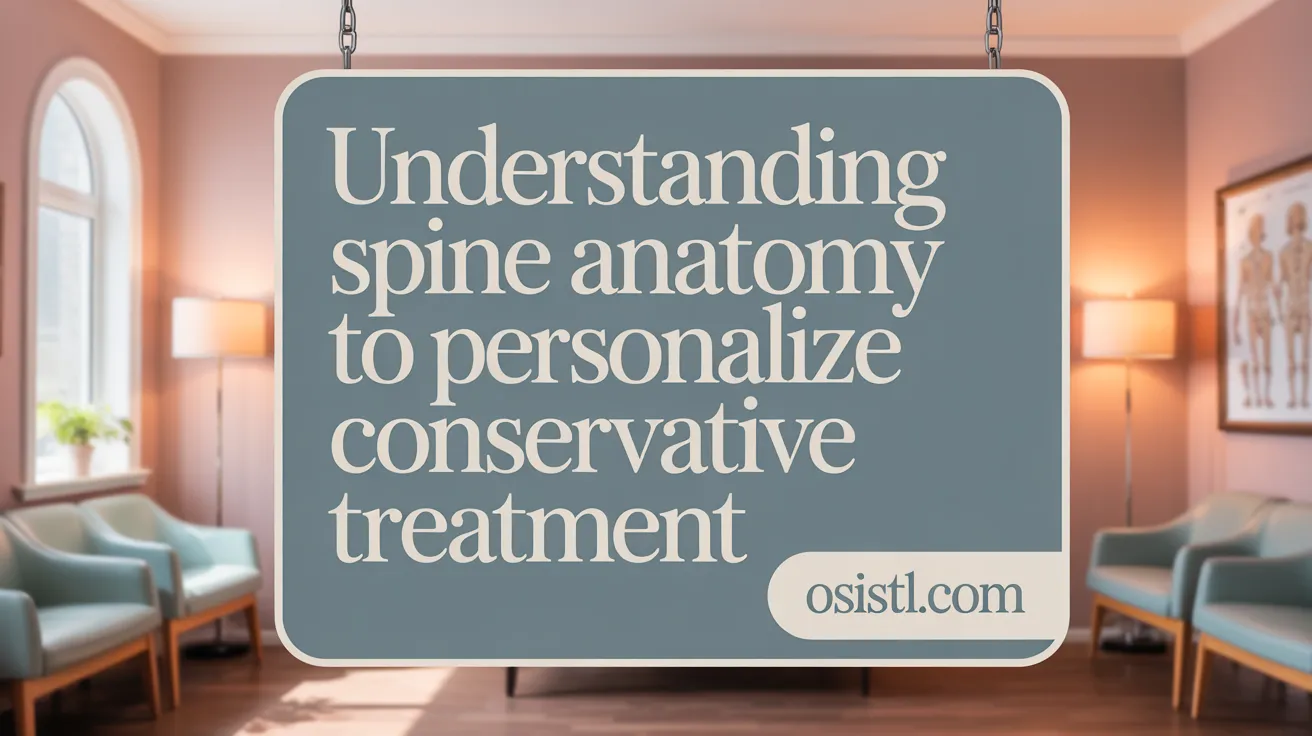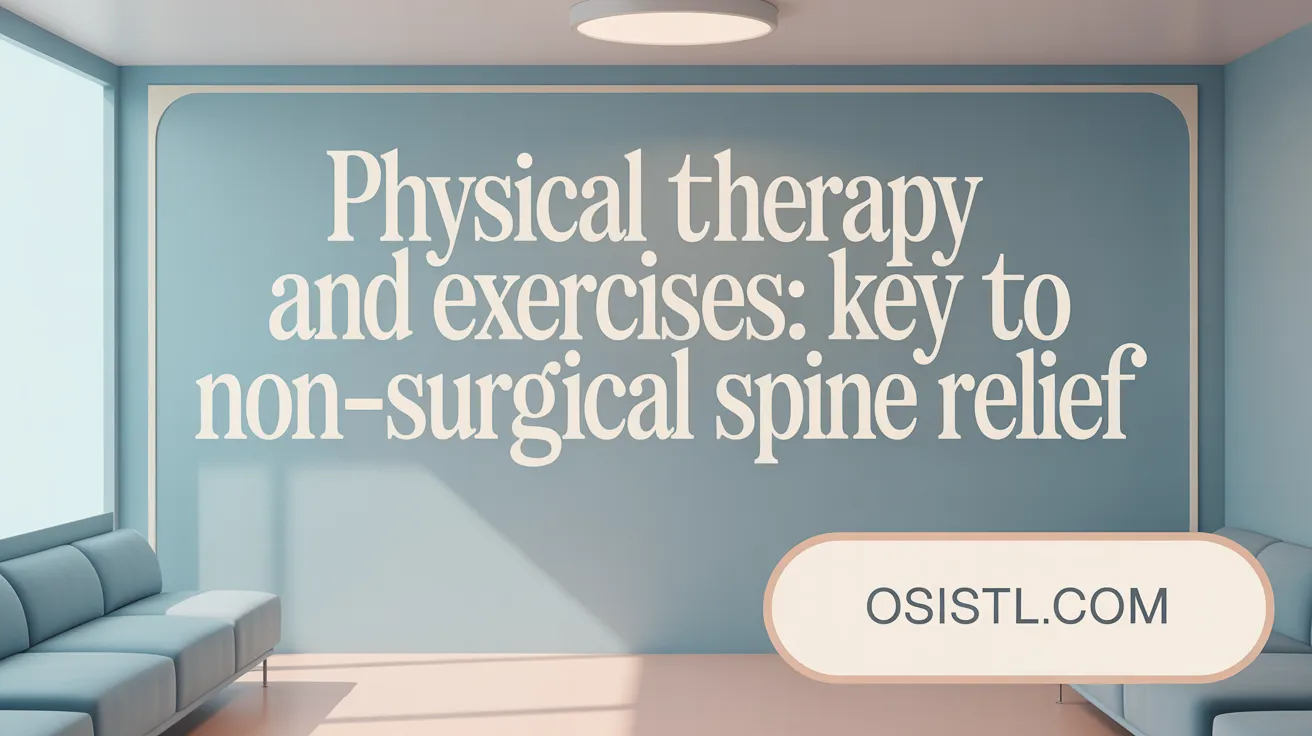Understanding the Landscape of Conservative Spine Care
Chronic back and neck pain affect millions worldwide, impacting daily function and quality of life. While surgery is often considered a last resort, many patients benefit significantly from conservative, non-surgical treatments that address pain, improve mobility, and empower self-management. This article explores causes, diagnostic insights, evidence-based therapies, and practical management strategies that emphasize natural and minimally invasive approaches to spine care, guiding patients through options for managing spine-related pain without surgery.
Common Causes and Comprehensive Non-Surgical Treatments for Chronic Back and Neck Pain
 Chronic back and neck pain are often caused by degenerative conditions such as arthritis of the spine, herniated or bulging disks, spinal stenosis, muscle strain, poor posture, and nerve compression. These issues can lead to persistent discomfort, reduced mobility, and the need for ongoing management.
Chronic back and neck pain are often caused by degenerative conditions such as arthritis of the spine, herniated or bulging disks, spinal stenosis, muscle strain, poor posture, and nerve compression. These issues can lead to persistent discomfort, reduced mobility, and the need for ongoing management.
To address these causes without surgery, a variety of conservative treatment options are available. Physical therapy plays a central role, focusing on personalized exercises that strengthen core muscles, improve flexibility, retrain posture, and enhance overall spinal stability. Aerobic activities like walking and swimming can also support pain reduction and mobility.
Lifestyle modifications are crucial components of effective management. Maintaining a healthy weight reduces strain on the spine, while quitting smoking improves blood flow and tissue health. Additionally, practices such as mindfulness, meditation, yoga, and tai chi can help manage the emotional and psychological aspects of chronic pain.
Pain management techniques include medications—such as NSAIDs, muscle relaxants, nerve pain medications, and antidepressants—to relieve symptoms. Injections like epidural steroid injections and nerve blocks can offer temporary relief and help diagnose pain sources. Complementary therapies like acupuncture, massage, biofeedback, and electrical nerve stimulation are also beneficial and often incorporated into a comprehensive care plan.
Understanding when surgery might be necessary is important. It is typically considered only for severe cases involving significant structural abnormalities or neurological deficits that do not respond to conservative treatments. These decisions are made carefully to ensure that surgery is truly the last resort after exploring all non-invasive options.
Grasping Spine Anatomy and Its Role in Tailored Conservative Care

Spine anatomy basics
The spine is a complex structure that provides support and mobility for the body. It comprises cervical, thoracic, lumbar, sacral, and coccygeal regions, each with vertebrae, intervertebral discs, nerves, muscles, and ligaments. The spinal cord runs through the vertebral canal, transmitting signals between the brain and body. Small joints called facet joints stabilize the spine, while muscles and ligaments help maintain posture and facilitate movement. For a detailed overview of spinal anatomy and function, you can refer to this resource.
Common spine conditions
Understanding common issues like herniated discs, spinal stenosis, osteoarthritis, and muscle strains is essential. Herniated discs occur when the soft inner core protrudes through a tear in the tougher outer layer, causing nerve compression. Spinal stenosis involves narrowing of the spinal canal, leading to nerve pinching, while osteoarthritis involves joint degeneration. Myofascial pain syndrome affects muscles and connective tissues, contributing to chronic discomfort. Learn about common spine conditions and treatments.
Implications for treatment selection
Knowing the specific spinal structures involved helps in choosing effective non-surgical therapies. For nerve compression, targeted interventions such as nerve blocks or specific physical therapy exercises can decompress affected nerve roots. In cases of joint degeneration, joint injections or stabilization exercises may be appropriate. Recognizing soft tissue issues like muscle spasms guides non-invasive methods such as massage therapy, dry needling, or stretching.
Targeted interventions
Personalized treatment relies on detailed knowledge of spinal anatomy and pathology. Advanced imaging like MRI or CT scans confirms diagnoses and informs intervention planning. For example, understanding the precise nerve root involved allows clinicians to apply precise nerve blocks or perform minimally invasive decompression. Therapy strategies such as core strengthening, posture correction, and activity modification are tailored to the condition’s location and severity. Overall, a well-rounded understanding of conservative spine care enables targeted, effective, conservative care that can alleviate symptoms and improve long-term spinal health.
Physical Therapy and Targeted Exercises: Cornerstones of Non-Surgical Spine Management

Role of physical therapy
Physical therapy plays a vital role in managing chronic spine and back pain without surgery. It involves a comprehensive evaluation of posture, movement, and muscle strength, allowing therapists to develop personalized treatment plans that focus on restoring mobility, reducing pain, and improving function. Through guided exercises and manual techniques, physical therapists help patients strengthen supporting muscles, stretch tight tissues, and correct movement patterns that may contribute to discomfort. Learn more about the Role of physical therapy and Physical therapy benefits.
Types of therapeutic exercises
A core component of therapy includes exercises such as knee-to-chest stretches, hamstring stretches, core strengthening routines—like plank and bridge exercises—and spinal mobility movements. These activities aim to stabilize the spine, improve flexibility, and alleviate pressure on nerves. Additionally, aerobic exercises like walking or swimming can boost circulation and promote healing. Find more details on Back exercises and Aerobic exercises for back health.
Exercise protocols for specific conditions
Protocols vary based on the condition. For herniated disks, exercises focus on neutral spine positioning and avoiding excessive forward bending. In cases of spinal stenosis, flexion-based stretches are recommended since extension may worsen symptoms. Tailored programs often include gentle ranges of motion, stabilization exercises, and posture retraining, often performed 3-4 times per week over several months, with gradual progress as strength and flexibility improve. Explore Physical therapy for herniated disks and spinal stenosis and Posture retraining for chronic back pain.
Benefits for pain relief and function
Engaging in regular physical therapy exercises helps decrease inflammation, restore mobility, and strengthen supporting muscles, reducing reliance on pain medications. Patients experience improved flexibility, better posture, and enhanced stability, leading to long-term relief and decreased likelihood of recurrence. Moreover, maintaining activity through targeted exercises supports overall spinal health, prevents future injuries, and enhances quality of life, demonstrating that non-invasive, guided physical therapy is an effective alternative to surgery for many with chronic back pain. For more on these benefits, see Managing chronic back pain without surgery and Conservative treatments for back pain.
Evidence-Based Natural and Lifestyle Approaches in Conservative Spine Care
 Managing back and neck pain effectively often involves embracing natural, lifestyle-oriented strategies supported by scientific research. Regular exercise, especially programs focused on core strengthening exercises, flexibility, and aerobic activity, helps to stabilize the spine, improve mobility, and reduce recurrence of pain. Maintaining a healthy weight reduces strain on the spine and mitigates degenerative changes.
Managing back and neck pain effectively often involves embracing natural, lifestyle-oriented strategies supported by scientific research. Regular exercise, especially programs focused on core strengthening exercises, flexibility, and aerobic activity, helps to stabilize the spine, improve mobility, and reduce recurrence of pain. Maintaining a healthy weight reduces strain on the spine and mitigates degenerative changes.
Ergonomic adjustments at work and home—such as proper chair support, correct lifting techniques, and mindful posture—can prevent injury and ease existing discomfort. Incorporating mindfulness practices, meditation, yoga, and tai chi serves to manage stress and emotional factors that can amplify pain sensations, contributing to overall reduction in pain levels.
Avoiding smoking is crucial, as tobacco impairs blood flow and hinders oxygen delivery to spinal tissues, weakening muscles and accelerating degeneration. Additionally, following an anti-inflammatory diet rich in colorful fruits and vegetables, fatty fish, leafy greens, healthy fats, nuts, and seeds helps to decrease internal inflammation that exacerbates back and neck pain.
Together, these evidence-based lifestyle modifications for back pain build a foundation for long-term spine health, often reducing the need for invasive interventions. By focusing on these natural approaches, patients can support their recovery and improve quality of life without relying solely on medication or surgery.
Alternative Therapies and Lifestyle Modifications for Non-Invasive Spine Pain Relief
 When it comes to managing spine-related pain without surgery, a variety of alternative therapies and lifestyle adjustments can be highly effective. Acupuncture and massage therapy are popular options that can help alleviate muscular tension, improve circulation, and reduce overall pain levels. Chiropractic care, through spinal adjustments and soft tissue techniques, aims to correct misalignments that may contribute to discomfort. Biofeedback and electrical stimulation therapies, such as TENS, teach patients how to control muscle tension and disrupt pain signals, providing relief without invasive measures.
When it comes to managing spine-related pain without surgery, a variety of alternative therapies and lifestyle adjustments can be highly effective. Acupuncture and massage therapy are popular options that can help alleviate muscular tension, improve circulation, and reduce overall pain levels. Chiropractic care, through spinal adjustments and soft tissue techniques, aims to correct misalignments that may contribute to discomfort. Biofeedback and electrical stimulation therapies, such as TENS, teach patients how to control muscle tension and disrupt pain signals, providing relief without invasive measures.
Maintaining a healthy lifestyle is crucial in supporting spine health and preventing future pain. Regular low-impact exercises like swimming, walking, or yoga can strengthen core muscles, improve flexibility, and promote proper posture. Stress reduction techniques—including mindfulness, meditation, and yoga—not only help manage emotional factors associated with chronic pain but also support physical recovery.
Diet plays an important role as well. Consuming anti-inflammatory foods—such as brightly-colored fruits and vegetables, fatty fish, leafy greens, nuts, and seeds—can reduce systemic inflammation that aggravates back pain. Avoiding processed foods and managing weight are additional strategies to lessen pressure on spinal structures.
Overall, an integrated approach that combines these therapies and lifestyle modifications can significantly improve quality of life, offering effective relief from spinal pain without the need for surgical intervention.
Interventional Pain Management: Non-Surgical Injection Techniques and Their Roles
How do non-surgical pain management techniques like injections and nerve blocks work for spine-related pain?
Injections such as corticosteroid epidurals and nerve blocks help reduce inflammation and block pain signals in affected areas of the spine. These interventional procedures are minimally invasive and can provide significant relief when combined with other conservative treatments.
Types of injection treatments
- Trigger point injections: Target tight muscle areas to relieve localized pain (Trigger point injections explained).
- Epidural steroid injections: Administer anti-inflammatory steroids into the epidural space to decrease nerve root inflammation (Epidural steroid injections for pain).
- Nerve blocks: Anesthetize specific nerves to interrupt pain transmission (Nerve blocks and nerve ablations for pain control).
- Nerve ablations: Use radiofrequency energy to deactivate pain-causing nerve tissues, offering longer-term relief (Radiofrequency Nerve Ablation).
Role in pain management
These injections are primarily used to diagnose the source of pain or to provide temporary symptom relief. They are especially effective for conditions like herniated discs, spinal stenosis, or pinched nerves (Pinched Nerve Treatments, Spinal Stenosis Management).
Combining injections with other therapies
Injection treatments often serve as part of a comprehensive approach, supplementing physical therapy, medications, or lifestyle modifications. While they do not offer a permanent cure, they can significantly improve quality of life and help patients function better during recovery.
More info
For more details about these minimally invasive options, searching "non-surgical spine pain injections and nerve blocks" can provide additional resources and current treatment guidelines.
When to Consider Surgery and Advancements in Minimally Invasive Spine Procedures
Deciding whether to pursue surgical intervention for spine or back pain depends on several factors. Typically, surgery is considered when conservative treatments—such as physical therapy, medications, and injections—fail to relieve symptoms after an adequate period of trial. Additionally, the presence of significant neurological deficits like limb weakness, loss of bladder or bowel control, or progressive neurological decline signals the need for surgical evaluation.
The process begins with a comprehensive diagnostic evaluation. Advanced imaging techniques like MRI are crucial to accurately identify structural issues such as herniated discs, spinal stenosis, or instability. Proper diagnosis informs whether surgical options might be beneficial.
The main differences between non-surgical and surgical treatments include their goals and approaches. Non-surgical methods usually focus on pain management and functional improvement without altering spinal anatomy. They encompass physical therapy, home exercises, medication, and injections. Surgical interventions, on the other hand, involve procedures that alter or stabilize the spine, such as discectomy or fusion.
Minimally invasive spine surgeries have advanced significantly, offering effective alternatives to traditional open procedures. These techniques use smaller incisions, real-time imaging guidance, and specialized instruments, resulting in less tissue disruption, shorter hospital stays, reduced pain, and faster recovery times. Procedures like endoscopic discectomy, artificial disc replacement, and minimally invasive decompression exemplify these innovations.
When conservative treatments are unsuccessful, further assessment is critical. This may include re-evaluating the diagnosis, considering alternative therapies such as nerve blocks or neuromodulation, and assessing the patient’s overall health and preferences. In cases where structural issues cause persistent pain and impairment, advanced surgical options—performed via minimally invasive methods—can offer substantial relief.
In summary, the decision to proceed with surgery should be individualized. It involves a careful review of diagnosis, symptom severity, failure of conservative management, and potential benefits versus risks of surgical options. Modern minimally invasive techniques continue to improve outcomes, providing effective solutions that preserve spinal movement and reduce recovery time.
Embracing Conservative Spine Care for Long-Term Relief and Function
Conservative management of spine and back pain offers a multifaceted approach that prioritizes natural healing, tailored exercise, lifestyle changes, and targeted pain control to improve quality of life without the risks of surgery. Understanding the underlying anatomy and staying informed about available treatment options empower patients to actively participate in their care. With advancing minimally invasive techniques and comprehensive nonsurgical modalities, most individuals can achieve significant pain relief and functional restoration. A patient-centered, evidence-based strategy remains the cornerstone of spine care, reserving surgery as a final option when truly necessary. Embracing conservative spine care fosters resilience, reduces reliance on medications, and promotes healthier, more active lives.
